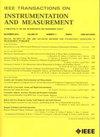具有协作推理能力的统一框架,用于非统一工业流程根源识别
IF 5.6
2区 工程技术
Q1 ENGINEERING, ELECTRICAL & ELECTRONIC
IEEE Transactions on Instrumentation and Measurement
Pub Date : 2024-10-17
DOI:10.1109/TIM.2024.3481554
引用次数: 0
摘要
抓住根本原因对于确保工业流程的安全和效率至关重要。然而,现有的大多数方法都无法用于结果因果关系挖掘,尤其是那些表现出非均匀特性的方法。此外,对流程知识和数据的利用不足也会导致模型性能不理想。为了填补这一空白,我们提出了一种针对非均匀过程的具有协同推理能力的统一根源识别框架。首先,设计了非均匀动态时间扭曲(NDTW)和最大相关性最小冗余(mRMR)方法,以较小的计算负担获取高度均匀的数据。随后,提出了语义辅助路径搜索算法,用于获取精炼知识因果图(RKCG),增强可解释性,为后续因果关系识别提供初步参考。然后,将高度统一的数据和 RKCG 整合到有利的注意力-因果感知门控循环单元(ACCRU)模型中,以获得更可靠的因果矩阵。然后,借助知识数据协同推理建立综合因果图。最后,通过 ASHRAE RP-1043 离心式冷水机组和实际磨煤机故障数据集对所提出的方法进行了验证。本文章由计算机程序翻译,如有差异,请以英文原文为准。
A Unified Framework With Collaborative Reasoning Capacity for Nonuniform Industrial Processes Root Cause Identification
Capturing the root cause is crucial for ensuring the safety and efficiency of industrial processes. Nevertheless, most of the existing methods are unavailable for resultful causality mining, particularly those exhibiting nonuniform characteristics. Besides, insufficient utilization of process knowledge and data leads to suboptimal model performance. To fill this gap, a unified root cause identification framework with collaborative reasoning capacity is proposed for nonuniform processes. Initially, the nonuniform dynamic time warping (NDTW) and maximal relevance minimal redundancy (mRMR) methods are designed to acquire highly uniform data with less computational burden. Subsequently, the semantic-aided path search algorithm is proposed for gaining the refined knowledge causal graph (RKCG), enhancing the interpretability and providing a preliminary reference for subsequent causality identification. After that, integrating the highly uniform data and RKCG was into the advantageous attention-causal-aware gated recurrent unit (ACGRU) model for a more reliable causality matrix. Then, the comprehensive causal graph is established with the aid of knowledge-data collaborative reasoning. Finally, the proposed method is verified by ASHRAE RP-1043 centrifugal chiller and real-world coal mill fault datasets.
求助全文
通过发布文献求助,成功后即可免费获取论文全文。
去求助
来源期刊

IEEE Transactions on Instrumentation and Measurement
工程技术-工程:电子与电气
CiteScore
9.00
自引率
23.20%
发文量
1294
审稿时长
3.9 months
期刊介绍:
Papers are sought that address innovative solutions to the development and use of electrical and electronic instruments and equipment to measure, monitor and/or record physical phenomena for the purpose of advancing measurement science, methods, functionality and applications. The scope of these papers may encompass: (1) theory, methodology, and practice of measurement; (2) design, development and evaluation of instrumentation and measurement systems and components used in generating, acquiring, conditioning and processing signals; (3) analysis, representation, display, and preservation of the information obtained from a set of measurements; and (4) scientific and technical support to establishment and maintenance of technical standards in the field of Instrumentation and Measurement.
 求助内容:
求助内容: 应助结果提醒方式:
应助结果提醒方式:


